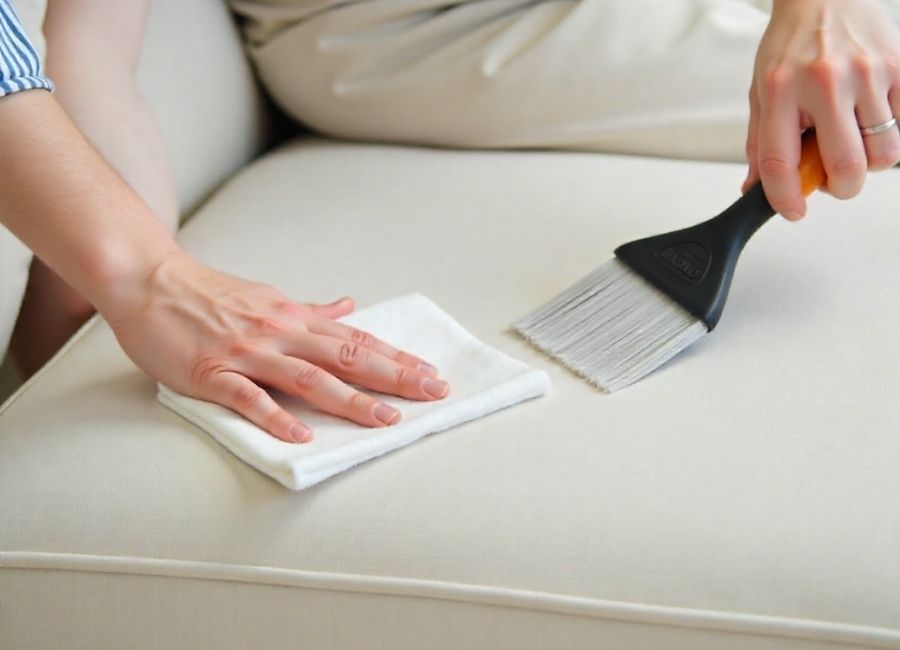Dust seems to appear on furniture the moment you finish cleaning it. No matter how often you wipe down surfaces, that familiar gray film returns within days, leaving your home looking neglected and triggering allergies along the way.
The frustration is real, but the solution doesn’t have to be complicated. Understanding why dust accumulates and implementing the right prevention strategies can dramatically reduce the amount of cleaning you need to do. From selecting the right cleaning products to implementing simple environmental changes, these proven methods will help you maintain dust-free furniture with minimal effort.
This guide covers eight practical techniques that address both immediate dust removal and long-term prevention, allowing you to enjoy cleaner surfaces and improved indoor air quality.
Why Dust Accumulates on Furniture

Before diving into solutions, it helps to understand what you’re fighting against. Household dust consists of dead skin cells, fabric fibers, pet dander, pollen, and microscopic particles that enter your home through windows, doors, and ventilation systems. (Dust, n.d.)
Furniture naturally attracts dust because of static electricity. (How to prevent dust on furniture: 3 tricks to save time, n.d.) When you walk across carpets or move fabric, you create electrical charges that cause dust particles to cling to surfaces. Wood furniture, in particular, develops static charges that attract airborne particles like magnets.
Temperature changes also play a role. (Caring for Your Furniture, n.d.) As air moves through your home, it carries dust particles that settle on the first available surface—often your carefully polished coffee table or dresser.
Use Microfiber Cloths for Superior Dust Removal
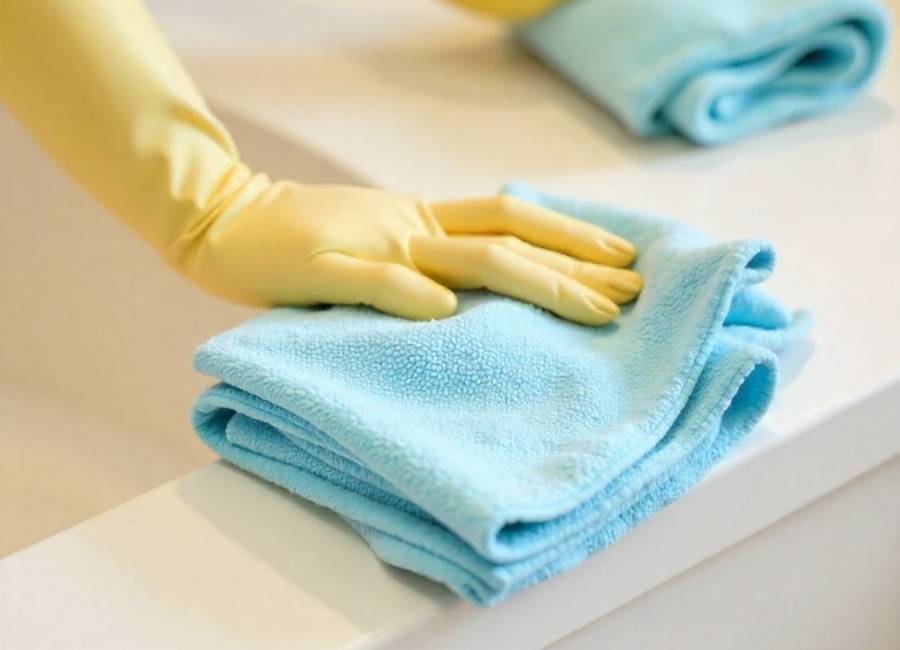
Regular cotton rags and paper towels simply push dust around, but microfiber cloths actually capture and hold particles. (How Microfiber Cleaning Cloth Outperforms Traditional Rags, 2025) The microscopic fibers create an electrostatic charge that attracts dust, making cleaning more effective with fewer passes. (Microfibre Technology, 2020)
For best results, use a slightly damp microfiber cloth rather than a dry one. The minimal moisture helps grab stubborn particles without leaving streaks or water marks on wood surfaces. Keep several microfiber cloths on hand—one for dusting, another for glass surfaces, and a third for electronics.
When washing microfiber cloths, skip the fabric softener. It coats the fibers, reducing their ability to attract dust. Air drying also helps maintain their effectiveness longer than machine drying.
Apply Furniture Polish Strategically
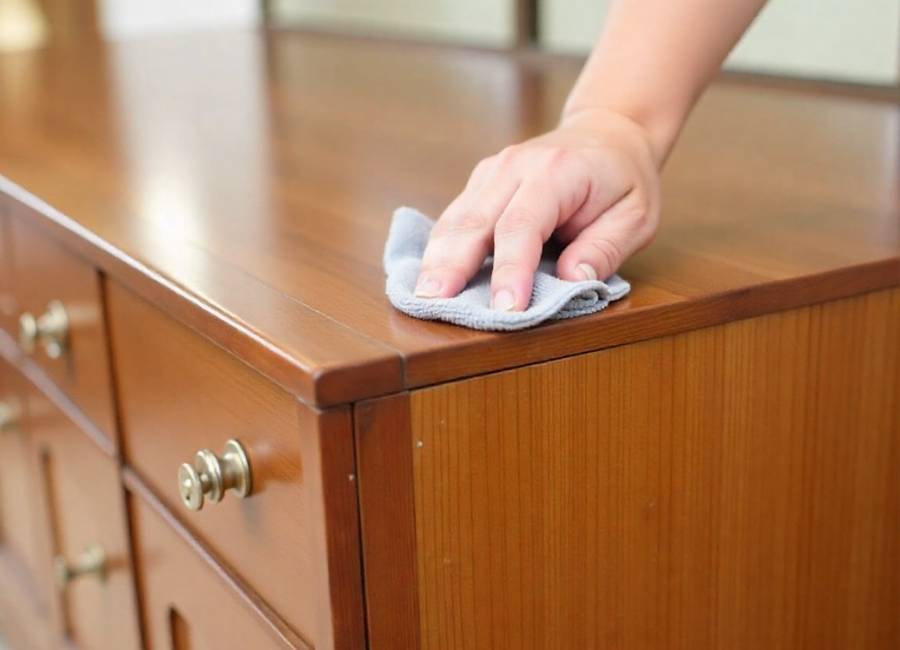
Quality furniture polish does more than make wood shine—it creates a protective barrier that repels dust and keeps it looking its best. (Aristo Shield Wood Furniture Protective Polish, n.d.) However, using too much polish can actually attract more dirt and create a sticky buildup over time.
Apply polish sparingly, using circular motions to work it into the wood grain. Focus on high-traffic pieces, such as coffee tables and dressers, that accumulate dust quickly. For daily maintenance, use a clean microfiber cloth without polish to remove surface dust, reserving polish application for weekly deep cleaning.
Avoid silicone-based polishes on antique furniture, as they can penetrate the wood and cause long-term damage. (What NOT to Do to Antique Furniture, n.d.) Instead, choose natural wax-based products that nourish wood while providing protection.
Control Humidity Levels
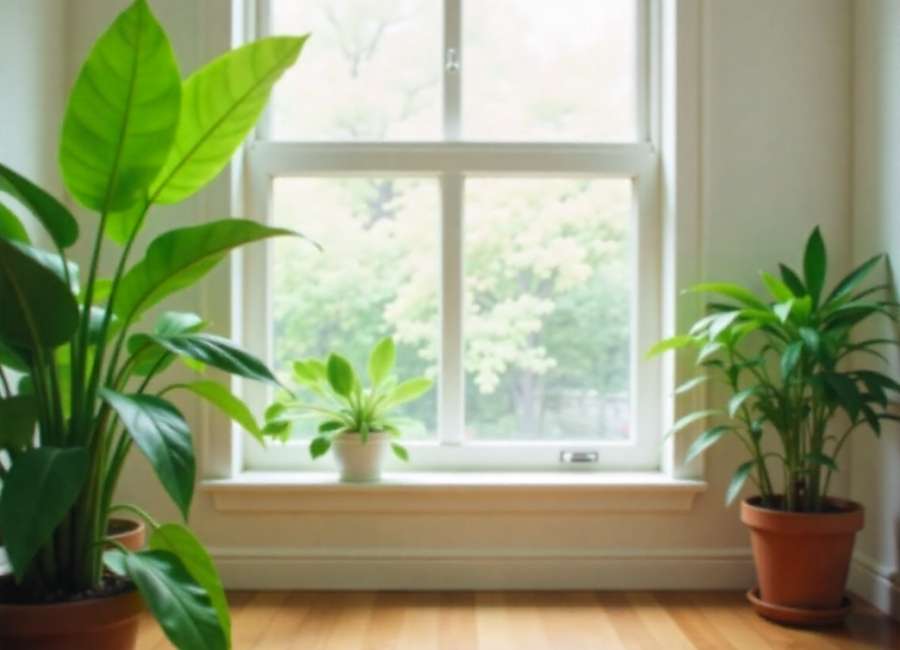
Dust particles float more easily in dry air and settle on surfaces more readily. (How Does Humidity Affect Dust?, 2025) Maintaining indoor humidity between 40% and 50% helps keep dust airborne longer, giving your air filtration system more time to capture it. (Allergies and Dust, 2020)
Use a humidifier during dry months, but monitor levels carefully. Excessive humidity encourages mold growth and can damage wooden furniture. A simple hygrometer helps you track humidity levels and adjust accordingly.
Plants also add natural humidity while improving air quality. Peace lilies, spider plants, and Boston ferns are particularly effective at increasing moisture levels and filtering airborne particles. (7 Best Plants for Indoor Air Quality Improvement That NASA Scientists Recommend, n.d.)
Upgrade Your Air Filtration System
Your HVAC system’s air filter plays a crucial role in dust control. (Do Air Purifiers Help With Dust?, 2023) Standard fiberglass filters only capture large particles, allowing fine dust to circulate throughout your home and settle on furniture. (Fiberglass Vs HEPA Filters: Ultimate Air Filtration Guide, n.d.)
Upgrade to HEPA filters or high-efficiency pleated filters with a MERV rating of 8-12. These capture smaller particles that contribute to dust buildup on surfaces. (Filters | HEPA | ASHRAE | ULPA | Sentry Air Systems, n.d.) Replace filters every 1-3 months, depending on usage and dust levels in your area.
Consider adding standalone air purifiers to rooms with valuable furniture or where you spend the most time. Place them near furniture groupings for maximum effectiveness, but avoid positioning them where they blow air directly onto surfaces.
Minimize Fabric and Carpet Dust Sources
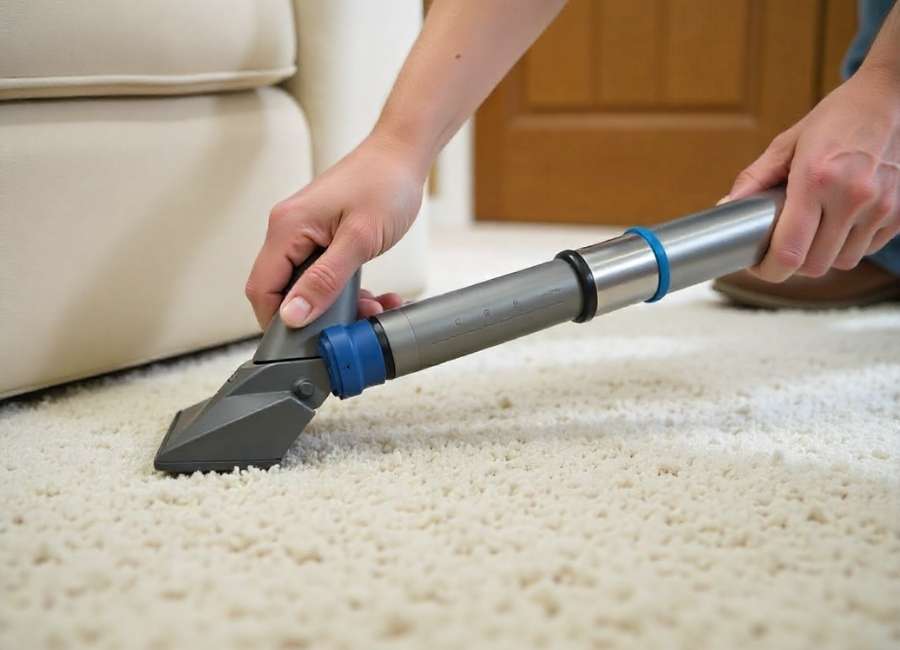
Textiles are major dust contributors. Every time you sit on upholstered furniture or walk on carpet, fibers break down and become airborne. (Cotton dust, 2025) Regular vacuuming with a HEPA filter helps, but consider these additional steps:
Vacuum upholstered furniture weekly using appropriate attachments. The crevice tool works well for removing dust from seams and corners, where particles tend to accumulate. For delicate fabrics, use the brush attachment with gentle pressure.
Wash throw pillows, blankets, and curtains regularly in hot water to eliminate dust mites and remove accumulated dirt and dust. (Hunt & Mary, n.d.) Consider switching to hardwood floors or low-pile rugs that trap less dust than thick carpeting. (What Kind of Rugs Are Safe for Hardwood Floors?, n.d.)
Create Physical Barriers
Simple prevention strategies can dramatically reduce dust accumulation. Close windows during high pollen days and windy conditions that stir up outdoor dust. Use doormats both inside and outside entrances to capture particles before they spread throughout your home.
Consider furniture covers for pieces you don’t use daily. Lightweight cotton or linen throws protect surfaces while maintaining room aesthetics. Remove and wash covers weekly, revealing clean furniture underneath.
Position furniture away from direct sunlight when possible. Sun exposure increases air movement and circulation patterns that deposit dust on nearby surfaces. Strategic furniture placement also improves airflow and reduces dust settlement.
Establish a Regular Cleaning Routine
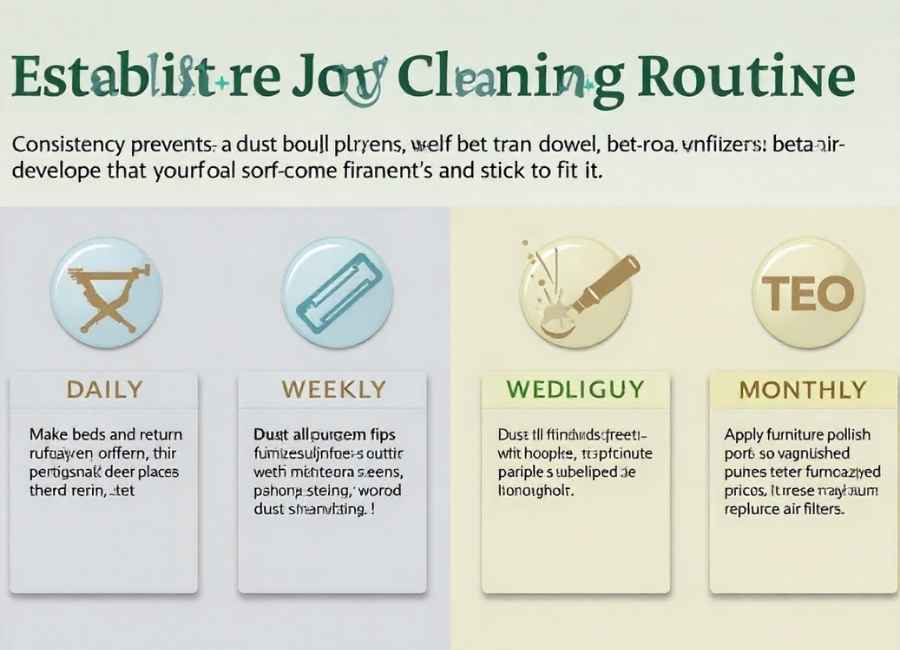
Consistency prevents dust buildup better than occasional deep cleaning marathons. Develop a routine that fits your schedule and stick to it:
Daily: Make beds and return items to their designated places to minimize surface clutter where dust tends to accumulate.
Weekly: Dust all furniture surfaces with microfiber cloths, working from top to bottom so particles fall to the lower surfaces you’ll clean next.
Monthly: Apply furniture polish to wood pieces, vacuum upholstered furniture thoroughly, and wash or replace air filters.
Start with high-priority pieces, such as dining tables and bedroom furniture, that you interact with daily, and then expand your routine to include occasional pieces, like bookshelves and decorative items.
Professional Solutions for Persistent Problems
If dust continues to accumulate despite your best efforts, consider seeking professional help. HVAC cleaning services can remove dust buildup in ductwork that recirculates throughout your home. This is particularly important if you’ve recently completed renovations or live in an area with high outdoor dust levels.
Professional furniture refinishing can restore older pieces that have developed textured surfaces where dust clings more easily. Smooth, properly sealed wood resists dust accumulation better than worn or damaged finishes. (What is a Sealed Hardwood Floor? (5 Benefits You Need to Know), n.d.)
For severe dust problems, indoor air quality specialists can identify specific sources and recommend targeted solutions, such as improved ventilation or specialized filtration systems.
Keep Your Home Dust-Free with Consistent Care
Maintaining dust-free furniture requires a combination of proper tools, environmental controls, and consistent habits. Microfiber cloths and high-quality furniture polish form the foundation of effective dust removal, while humidity control and air filtration prevent accumulation from occurring in the first place.
The key to success lies in developing sustainable routines that prevent dust buildup rather than constantly fighting established problems. Start with one or two techniques that fit easily into your current schedule, then gradually incorporate additional strategies as they become habits.
Your furniture will stay cleaner longer, your indoor air quality will improve, and you’ll spend less time fighting the never-ending battle against household dust.







